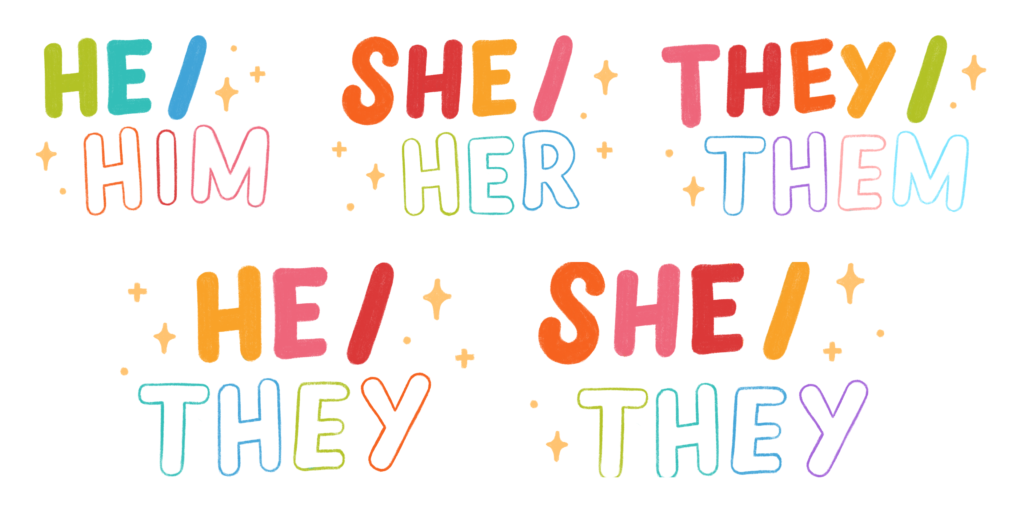
Understanding Pronouns
Date Posted: May 31, 2022
Categories:

The Goal:
Our goal is to help people communicate accurately and respectfully with one another. One thing to note: Language changes.
Understanding Pronouns –
What’s a pronoun, why they matter, and what to do if you make a mistake?
What’s a pronoun? Pronouns are related to gender identity and expression, but there aren’t specific pronouns for specific genders. We use pronouns most often when referring to someone without using their name.
Example: Have you heard from Javier? HE hasn’t texted me back all day. (He is the pronoun)
Why they matter? It’s a simple way to affirm their identity. As well as it’s a way to let them know that you see them, you affirm them during a time when they’re being targeted by so many discriminatory anti-trans state laws and policies.
What if you make a mistake? It happens, we all make mistakes! Correct yourself quickly and move on. The best thing to do is use the correct pronouns the next time. If someone corrects you say, “thank you.” Don’t forget, do better!
Tips: Consider meeting someone to practice. For every time you get it wrong, do it right 3 times.
Explain each one:
He/Him/His: are gender-identity pronouns that are usually used to refer to people who identify as “men or boys.”
She/Her/Hers: is a set of gender-identity pronouns used to refer to people who identify as “women or girls.”
They/Them/Theirs: For many trans, non-binary, or gender non-conforming people, using they/them pronouns enable them to navigate the world in a non-gendered way and have their identity reflected to them in a respectful way. These set of pronouns are used as gender neutral pronouns to refer to a single person.
He/They or She/They: That means you can use both pronouns, and you can alternate between those when referring to them. Either pronoun would be fine. The best approach is to listen to how people refer to themselves or ask.
Resource: Valerie Carrillo / valerie.reina93@gmail.com
